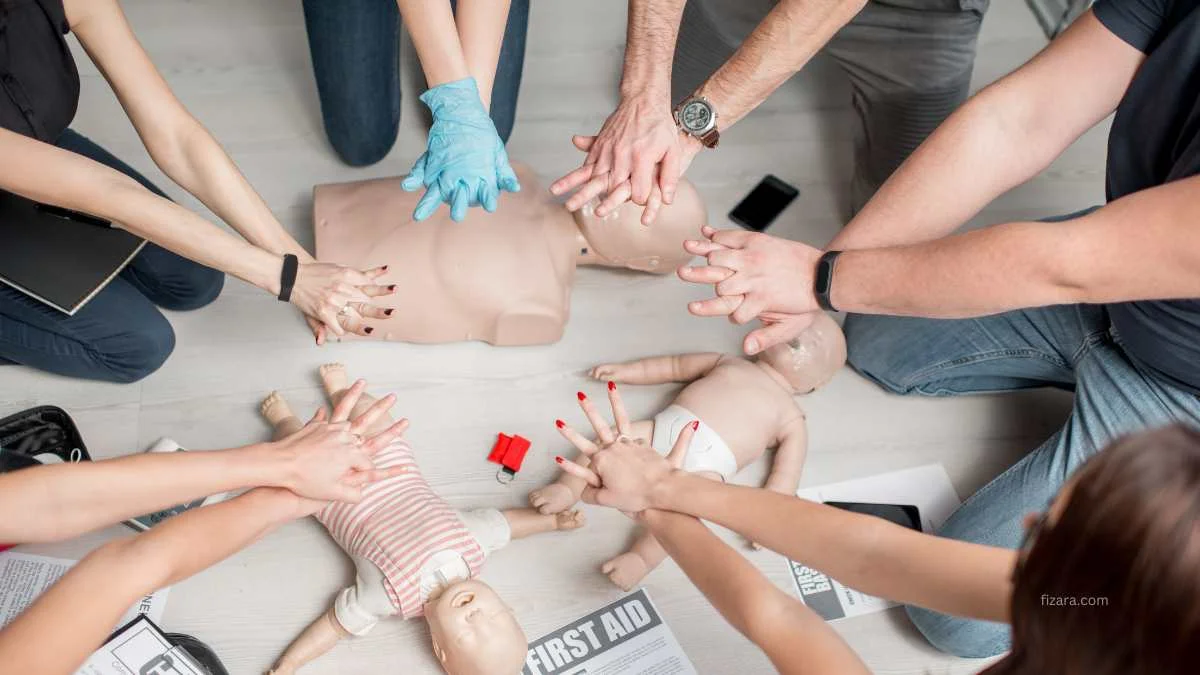First aid training is an invaluable skill any individual can have. You get the knowledge and confidence to respond to emergencies and help people recover. First aid can be applied to a minor injury or a life-threatening situation. This blog looks into first-aid training courses and their importance. The main parts of a complete first aid course are covered. Once you are through reading, you’ll know about several first aid courses and how you can learn to act decisively in emergencies.
Importance of first aid training
Accidents and medical emergencies can happen anywhere and at any time, including at home, work, or in public spaces. Providing immediate help to victims before professional medical help arrives can save lives. You learn life-saving skills from first aid training. Participants also develop a sense of responsibility and alertness.
You get many benefits from first aid training. One is the ability to assess and respond quickly to medical emergencies. As an individual trained in first aid, you can administer CPR, control bleeding, and stabilize fractures. Your able assistance can lower the likelihood of complications and keep a person alive until further help arrives.
First aid training enables confidence and mitigates panic in emergencies. You can take quick and decisive action when you are sure about what to do. Your quick response can help prevent more injury or harm. First aid training also promotes a culture of safety and readiness in communities. Mute bystanders automatically transform into active crisis responders.
Components of a comprehensive course
A comprehensive course covers various topics and skills. The lessons are for immediate care in various emergencies. You usually find these crucial components included in such courses.
Basic first aid techniques: Participants learn to assess a scene for safety and approach an injured or ill person. You also learn to conduct a primary survey to identify life-threatening conditions.
Cardiopulmonary resuscitation: CPR is a critical skill taught involves chest compressions and rescue breaths. CPR keeps oxygen-rich blood flowing to the brain and important organs of victims of cardiac arrest.
Choking management: This course is about training in techniques to remove obstructions from the airway. Choking can result from food or small objects blocking the airway. Some medical conditions can also lead to choking sometimes.
Bleeding control: First aid training also covers proper bleeding control techniques. These include direct pressure, elevation, and the application of tourniquets, if necessary.
Management of fractures and musculoskeletal injuries: Participants learn how to assess and immobilize fractures, sprains, and strains. These techniques help prevent further injury and ease patient transportation to medical facilities.
Medical emergencies: First aid training includes recognizing and managing common medical emergencies. Heart attacks, strokes, and respiratory failures are some examples. Seizures, burns, and allergic reactions are other instances.
First aid kits and equipment: The training includes detailed instructions on making and maintaining first aid kits. You also learn how to use equipment properly. Such equipment can include automated external defibrillators (AEDs) and also bandages and splints.
Psychological first aid: Psychological assistance is integral to first aid training. You learn how to provide emotional support and assistance to individuals in trauma or distress.
Types of first aid training courses
Various first aid training courses are available for different needs and skill levels. The courses impart the knowledge and skills to respond to emergencies. Listed below are some types of first aid training courses:
Basic first aid course: The basic first aid course covers fundamental skills. You learn the ways to provide immediate care in emergencies. You understand how to assess the environment around you. You conduct primary surveys, give CPR, manage choking, control bleeding, and provide basic wound care. This course is suitable for those who want to learn first aid skills for everyday situations.
CPR and AED certification: This course focuses primarily on administering cardiopulmonary resuscitation and automated external defibrillator usage during cardiac emergencies. You learn to perform chest compressions, deliver rescue breaths, and operate AEDs. Individuals from all walks of life can take up this course.
Wilderness first aid course: These courses are ideal for individuals who spend time in remote or outdoor environments with limited access to medical assistance. First aid techniques are tailored to wilderness settings. For instance, treating injuries sustained during hiking, camping, or outdoor activities. You learn environmental emergency management, patient assessment and stabilization, and medical resource improvisation when necessary.
Pediatric first aid course: You learn to care for infants and children in emergencies. Training includes recognizing and responding to common childhood injuries and illnesses, administering CPR, and managing overall child safety. Parents, caregivers, teachers, and childcare professionals working with young children must take this course.
Advanced first aid course: Healthcare professionals, emergency responders, and workplace safety personnel can benefit from this course. Their work profiles demand a higher level of proficiency in first aid skills. The topics covered include:
- Advanced airway management
- Medication administration
- Complex medical emergency management
- Emergency medical services (EMS) provider coordination
Furthermore, individuals who want to become certified first aid instructors can enroll in first aid instructor certification courses. Once they complete a course, they can teach first aid courses and certify individuals in first aid skills.
Empowering individuals to act
The fundamental objective of first aid training is to provide practical skills to tackle medical emergencies. People who learn first aid become more responsible and ready to help during emergencies. They know what to do and feel sure about taking action. Thus, communities become safer while handling emergencies becomes easier.
Conclusion
Every individual should get enrolled in first aid training. You gain the skills and knowledge in basic life-saving techniques, which can come of use at any time. Moreover, you can choose the training format to suit your commitments. So, you can choose in-person classes, fully online courses, or a blend of the two. Your investment of time, money, and effort in first aid training is worthwhile. You should get widespread recognition. Every conscious and concerned individual must take proactive steps to acquire these life-saving skills









